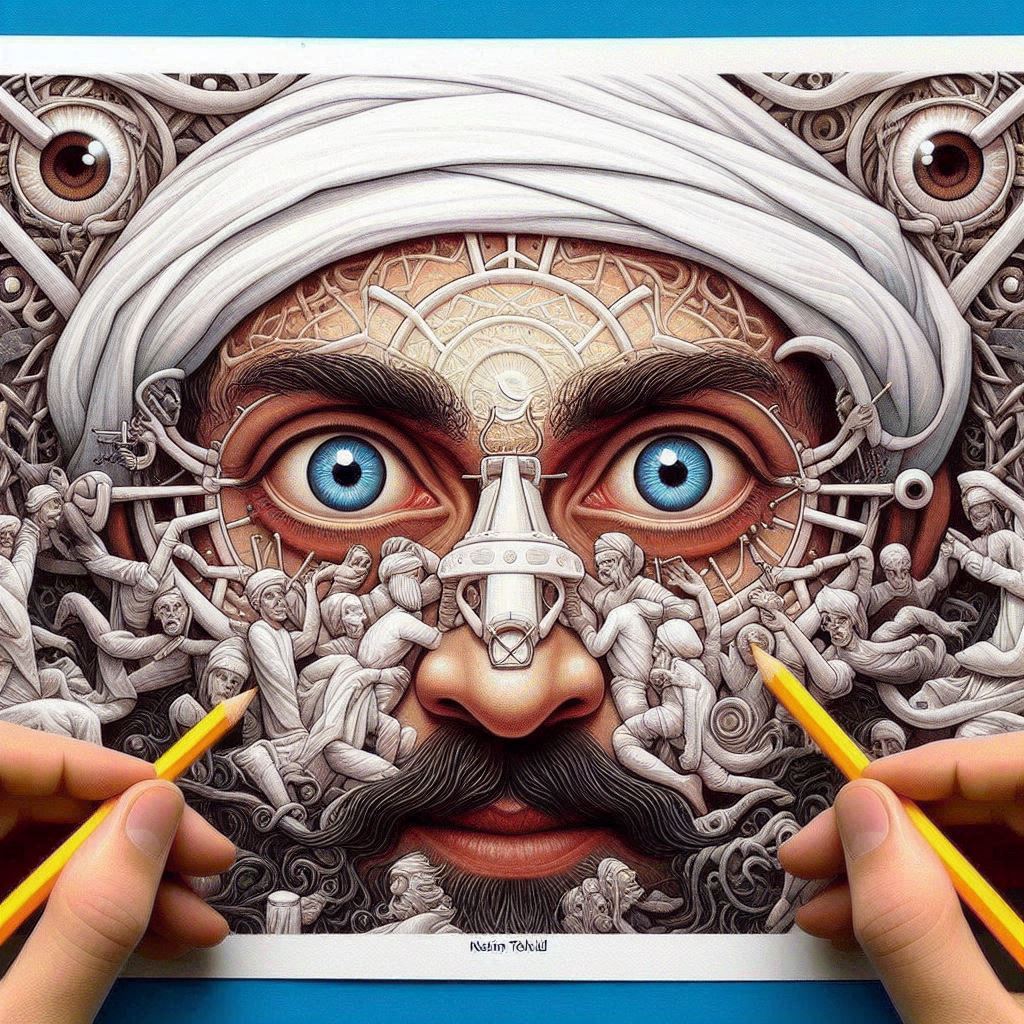گرانش، نیرویی که حرکت سیارات را کنترل میکند و امواج اقیانوسها را به پیش میراند، میتواند بهعنوان یک ابزار خلاقانه در هنر مورد استفاده قرار گیرد. در این مقاله، تأثیر گرانش بر هنر بررسی شده و روشهایی که هنرمندان با استفاده از نیروی جاذبه، طرحهای منحصربهفرد خلق میکنند، معرفی میشود. از جریانهای سیال تا تکنیکهای چکاندن رنگ، گرانش بهعنوان یک ابزار نامرئی اما قدرتمند در خلق آثار هنری به کار گرفته میشود.
از دوران باستان، نیروی گرانش نه تنها در علم، بلکه در هنر نیز نقشی اساسی ایفا کرده است. لئوناردو داوینچی در مطالعات آناتومی خود از اثرات گرانش بهره میبرد و جکسون پولاک در سبک اکسپرسیونیسم انتزاعی خود از نیروی گرانش برای توزیع رنگها روی بوم استفاده میکرد. در عصر حاضر، هنرمندان و طراحان با بهرهگیری از این نیروی طبیعی، روشهای نوینی برای خلق آثار بدیع توسعه دادهاند.
نقاشی با گرانش: تکنیکها و روشها
۱. استفاده از نیروی سقوط رنگ
یکی از رایجترین تکنیکهای نقاشی با جاذبه، ریختن یا چکاندن رنگ روی بوم است. در این روش، هنرمند رنگ را از ارتفاع مشخصی رها میکند تا نیروی گرانش مسیر و نحوه پخش شدن آن را تعیین کند. این روش در آثار نقاشانی همچون جکسون پولاک دیده میشود.
۲. کنترل جریانهای سیال
هنرمندان معاصر با استفاده از ترکیبات رنگی مایع و سطحهای شیبدار، جریانهای سیالی را خلق میکنند که با نیروی گرانش تغییر جهت میدهند. این روش در هنر اکریلیک پورینگ (Acrylic Pouring) محبوبیت زیادی دارد.
۳. گرانش در هنر سهبعدی
در مجسمهسازی و چیدمانهای هنری، گرانش نقش مهمی در تعادل و پایداری آثار دارد. مجسمههای معلق یا آثار تعادلی از جمله تکنیکهایی هستند که هنرمندان برای نمایش تعامل نیروهای فیزیکی از آن استفاده میکنند.
نمونههای الهامبخش از هنر مبتنی بر گرانش
- آثار نیکولا بوشه که با استفاده از جاذبه و رنگهای سیال، نقاشیهایی زنده و پویا خلق میکند.
- تجربیات آزمایشگاهی در هنر فیزیکی که شامل ترکیب رنگ و حرکتهای کنترلی با میدانهای گرانشی است.
- پروژههای مجسمهسازی معلق که در آنها تعادل میان وزن و نیروهای جاذبه به یک ترکیب بصری زیبا منجر میشود.
گرانش، بهعنوان نیرویی که همواره در زندگی ما حضور دارد، میتواند بهعنوان یک عنصر خلاقانه در هنر استفاده شود. از نقاشیهای چکیده گرفته تا چیدمانهای معلق، هنرمندان از این نیروی فیزیکی برای خلق جلوههای بصری منحصربهفرد بهره میبرند. آیندهی هنر مبتنی بر گرانش، نویدبخش توسعه روشهای جدیدی در طراحی و بیان هنری خواهد بود.
Gravity Painting: Using Gravity to Create Unique Artworks
Gravity, the force that governs planetary motion and ocean tides, can also be harnessed as a creative tool in art. This article explores the influence of gravity on artistic expression and introduces methods by which artists use gravitational forces to create unique designs. From fluid dynamics to drip painting techniques, gravity serves as an invisible yet powerful instrument in artistic creation.
Introduction
Since ancient times, gravity has played a fundamental role not only in science but also in art. Leonardo da Vinci used gravity in his anatomical studies, and Jackson Pollock employed it in his abstract expressionist style to distribute paint across canvases. Today, contemporary artists and designers continue to explore gravity as a medium for innovation and artistic experimentation.
Techniques and Methods of Gravity Painting
1. Utilizing Free-Fall Paint Drips
One of the most common techniques of gravity-based painting is pouring or dripping paint onto a canvas. The force of gravity dictates the flow and spread of the paint, as seen in the works of Jackson Pollock.
2. Controlling Fluid Flows
Contemporary artists use liquid paint mixtures and inclined surfaces to create fluid dynamics influenced by gravity. This technique is widely used in acrylic pouring art.
3. Gravity in Three-Dimensional Art
In sculpture and installation art, gravity plays a crucial role in maintaining balance and stability. Suspended sculptures and equilibrium-based artworks showcase the interaction between physical forces and artistic expression.
Inspirational Examples of Gravity-Based Art
- Nikola Boche’s works, which use gravity and fluid colors to create vibrant and dynamic paintings.
- Experimental physics-based art, combining color and controlled motion with gravitational fields.
- Suspended sculpture projects, where the balance of weight and gravitational force results in striking visual compositions.
Gravity, a constant presence in our lives, can be harnessed as a creative element in art. From drip paintings to suspended installations, artists utilize this physical force to produce unique visual effects. The future of gravity-based art promises new methods in design and artistic expression, merging physics with creativity.
- ۰ نظر
- ۱۷ بهمن ۰۳ ، ۱۴:۳۶


